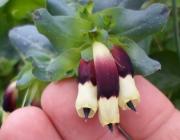Abstract:
Field experiments were conducted to investigate the response of common bean (Phaseolus vulgaris L.) to nitrogen fertilizer. The main factor included the fertilizer (Granular Urea 46% N), was made up of two levels: no fertilization (0 kg/plot: control) and fertilization (0.4 kg/plot), while the secondary factor was the variety (three varieties of common bean: Djedida, Nelson and Jalila). The experimental design was a randomized complete block design with split plot arrangement and replicated four times. The effect of fertilization was evaluated during two development stages (flowering and fruiting) for each variety and this on the total dry biomass, the length of the aerial and root parts, as well as on the number of secondary roots. On the other hand, the combined effect of fertilization and variety was studied on some yield parameters per plant, such as the number of flowers, pods, seeds and the harvest index. In addition, the number of nodules at the end of seed maturation was evaluated. The results indicated that the nitrogen fertilizer application significantly reduced the root length, the number of nodules and secondary roots in most of the common bean varieties. However, fertilizer application significantly increased dry matter in both flowering and fruiting stages, for the three studied varieties. Pod number per plant and seed yield was increased by the application of N fertilizer, depending on varieties and the parameters being measured. Djedida and Jalila varieties gave the best yield and can therefore be recommended to farmers. According to our results, the percentage of improvement by N fertilization on one parameter or another does not exceed an average of 20%, compared to the control. Indeed, the effect of fertilization is positive and seems to increase the harvest index by 18% in Djedida and by 20% in Jalila, compared to non-fertilized plants. Unfertilized plants of the variety Nelson showed the highest ability to nodulate.
Publisher's Version
